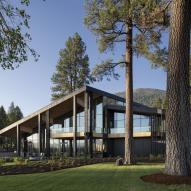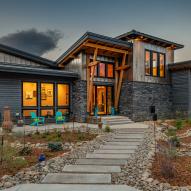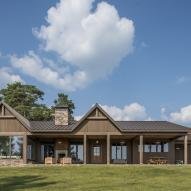THEY QUOTED YOU HOW MUCH?!
I had a great conversation today with a friendly competitor of ours. No, I didn’t call to let him know that we’re better than them ( we are ), or that we have a way cooler office & showroom ( we do ) or that our office manager plays a mean fiddle ( she does ) and theirs doesn’t. I called to touch base, say hello, and let them know that they might receive a call from a potential client of mine, and that I wanted to make sure she was steered clear of some potentially bad flooring. See, she contacted us at Pioneer Millworks looking for a somewhat substantial quantity of Heart Pine flooring, in a fairly clean grade, expecting pricing about 1/2 of what ours would be. Sure – I am used to the occasional “deathly silence” once folks find out that reclaimed wood is more expensive than new, and with the economy the way it has been, certainly some companies are more hungry than others for work. When I heard she was being given a price 50% of ours though, I began to question the quality of the materials she was seeing from these other companies.
“But the samples look great – almost clear, with very few knots! And it is really tight grain, with a beautiful color!” Just sounds too good to be true if you ask me, so as I outlined some basic checklist items to confirm about a reclaimed wood floor and the company making it, I thought it might be of use to share them with the rest of the world too:
As a rule, your floor should be:
– 100% Reclaimed materials. Ask what building the wood is coming from, and where it was located. If they don’t know, think twice.
– Kiln-dried. Flooring should to be shipped at a 6% – 8% moisture content. Air-drying, drying rooms, etc don’t count, unless you like the idea of twisting & shrinking floorboards & potential insect infestation.
– Milled with a precise T&G, and square-cut, if not, end matched, on the ends. Look at the samples they provide – How does the milling fit together? Do your samples glide together easily, and do the top faces line up to form a smooth floor? How much sanding will therefore be required to get the floor they way you want it?
– Made to written grade specifications for your order. Does the company have specific written criteria they use in identifying the proper materials for your order? Do your samples look that way as well? Can they show you photos of installations of a larger area of the same flooring?
– Free of contaminants. Was the wood exposed to any nasty chemicals due to the use of the original structure? ( we have turned down otherwise BEAUTIFUL wood because of this in the past )
– A nice mix of lengths. Ours range from 2’ – 12’, with longer boards as well, depending on the shipping method. You don’t want a floor that’s all 2’ – 4’ shorts, which is entirely possible when chopping out defects to make a higher grade floor from sub –standard materials.
– Made by a company that has been working with Heart Pine for a long time. There’s a plethora of companies that tout their reclaimed wood, but lack the facilities, inventory, knowledge, and passion to create a beautiful floor the RIGHT way. Only a handful have been around for as long as we have ( 20+ years, and I’ve been here for 13 of those! ) making custom reclaimed wood floors.
At the end of the conversation, I encouraged her to continue to call around, and see what other prices she found. We might not be the least expensive, but we also won’t be the highest-priced. Plain & simple, we’re passionate about what we make, every one of us. Because of that, she is assured that her floor will be the best Heart Pine floor on the market, crafted in our own shop, from true reclaimed wood of the highest quality ( FSC®-Certified to boot! ) and in a manner thats respectful to the environment. If nothing else, she’s more educated now, and can make a more informed decision. Do I think she’ll be back to us to purchase her floors in a few months? You bet. But she’ll have to catch me when I’m not out seeing Valerie play her mean fiddle with “The Bob Squad” around Rochester.
Stay in touch – thanks for reading.





